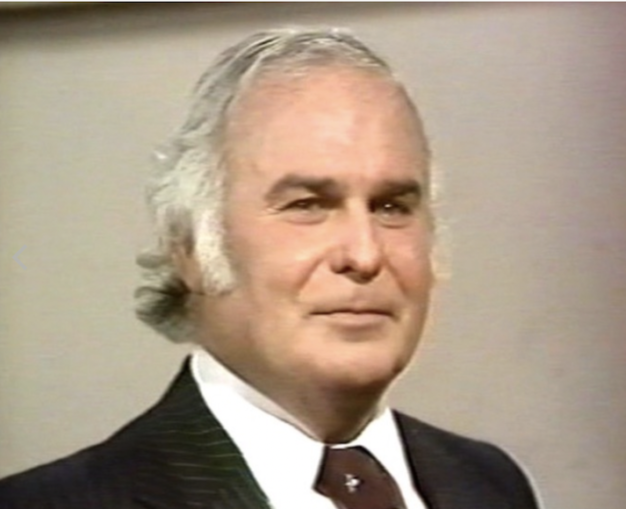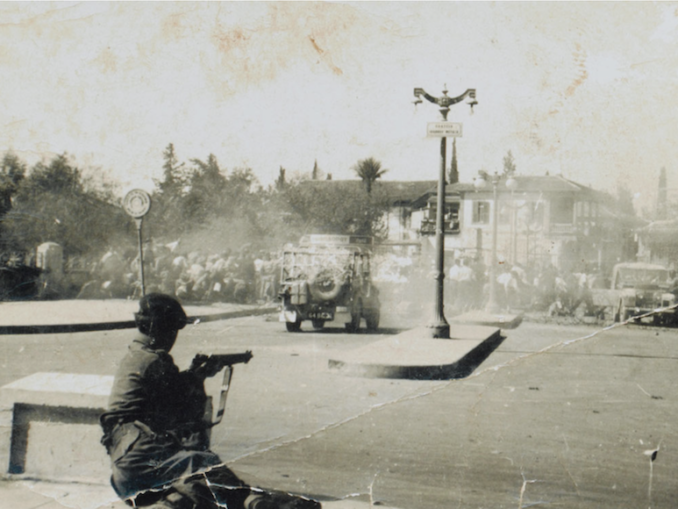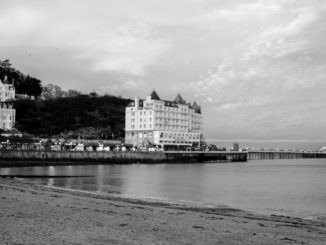Another chapter from “Special Assignment” by my uncle John Alldridge
(published in 1960 and now long out of print)
Halfway over Putney Bridge the No 14 bus jolted to a halt. Behind it the rush-hour traffic began to pile up until there was a solid block all the way back to the Embankment.
Squeezed into his seat on the top deck young Terry Fincher looked at his watch hopelessly. Nobody was actually enjoying the hold-up. You could tell that by the furious chorus of motor horns.
But to young Fincher, at fifteen, it seemed like the end of the world. He was going to be late. And jobs like his – messenger boy in a Fleet Street picture agency – were not easy to find. He would never get a second chance. This was the end . . . .
And yet this very ordinary day which had started so badly was to produce the turning point in Terry’s life. That traffic jam on Putney Bridge which made him late for work was to give him the chance that usually comes only once in a lifetime. And instead of getting a dressing-down for being forty-five minutes late he was praised, patted on the back and given a bonus of £6!
What had held up that bus, and neatly tied up the traffic, was – a swan. Flying wildly off-course, it had hit the trolley-bus wires and lay stunned in the road.
A thousand people must have seen it happen. But only a boy of fifteen saw it for what it was – the perfect front-page picture. Unslinging his cheap, very second-hand box camera – he was never without it – he scrambled off the bus, squeezed through the traffic – and took a picture of a London ‘bobby’ gently shooing the dazed swan back into the Thames.
That night all three London ‘evenings’ carried Terry’s picture on their front page. The picture ‘snapped’ on a second-hand camera.
And from that day Terry has never looked back. For that one chance was all he needed. It won him promotion – and the start of a career which has taken him on assignments over most of the world.
He has taken his camera – he carries three now, with six lenses – to war. He has grovelled in the mud for a front-page picture; and greeted the famous for a ‘diary exclusive’.

Terry Fincher,
www.bigredbook.info – Courtesy Big Red Book
It’s been a thrilling life. Sometimes a tough life. But it’s been boring, too, at times, and tedious; for a Press photographer’s daily round is not all glitter and glory.
But let Terry tell you his story in his own way. And if you have secret ambitions to be a top Fleet Street photographer one day – well, don’t say you haven’t been warned . . .
“I had big ideas of being a reporter at first. But then I got wise to the fact that I couldn’t write. And I decided I would be a cameraman.
So I skipped away at the age of fourteen from the business college where my mother was wasting 5 guineas a term to get some sense drummed into me.
I answered an advertisement in a local South London paper for a messenger boy at a national picture agency. I got the job – for 28s. a week.
I had to deliver news photographs to the big national dailies and London evenings. But I also got out on news assignments – carrying the staff photographers’ heavy cameras and slide cases.
It was this part of the job as a ‘cameraman’s caddy’ that made me determined that someday I would be taking the pictures instead of watching someone else doing it.
For six months I was the general runaround boy. Until that swan chanced to stop my bus. After that I was immediately promoted to the glazing room – and got a 5/- rise.
I had just bought my first camera. My mother – always my best friend who constantly encouraged me lent me the 18s. for it. I still haven’t paid her back.
The camera had no name on it. I picked it up in a Holborn junk shop. I had to stick it together with black insulating tape. But it worked well enough, anyway, to get the Putney picture.
When I wasn’t glazing pictures in the office I was always wandering around London in my lunch hours looking for news pictures.
I’ve always believed in looking for news and not letting it come to you. It’s the only way to get the exclusive shots which pay off in big money and big ‘spreads’ in the papers. A chance meeting can often give you the picture that no one else can get. You can see I’m a great believer in chance!
It was while I was out strolling in London that I saw the woman they call the hardest-to-photograph in the world – Greta Garbo.
I went up to her and said: ‘Can I take your picture, please?’ She smiled. But the man next to her looked at my dumpy, ill-dressed figure – you can’t dress well on 33/- a week – and asked me to go away. It was Noel Coward.
But the Woman who always Wants to be Alone relented when she saw my crestfallen face. She let me take a head-and-shoulders shot of her. Then I raced back to Fleet Street.
I rushed into the office of ‘G.P.’ – George Pratt, general manager of Keystone Press Agency – and said: ‘I’ve got a picture of Greta Garbo for you.’
Miss Garbo had been sought by every Fleet Street photographer. A picture of her published in all the papers throughout the world serviced by Keystone would have been worth as much as £100 – or even more.
The plate was rushed through the process room. Then the blow fell. The plate was fogged!
My eighteen-shilling camera had let me down. Some light had got onto the plate through a hole in the bellows. I’m not sure who was more upset – me or G.P. . . .!
But the incident taught me a lesson I have never forgotten. Freddie Ramage, a distinguished war photographer with the U.S. Army, took me gently to one side. Said Freddie, ‘Never shout about your pictures until you have developed them.’
I’ve always remembered that. Soon after this near-miss, I was soldiering in the Army. But in 1951 I was back in Fleet Street. And this time G.P. said: ‘We’ll give you the chance you want. You can start on £3 a week, plus a bonus for every picture you get printed.’
I did well. And in four months I was on the staff. It was one round of photographing film stars and footballers, big fights, baby shows, rail and air disasters.
For three years I was a run-of-the-mill photographer. But all the time I was being encouraged and groomed for bigger assignments by G.P., my picture editor, Midge Aylward, and Bert Gari, head of Keystone. It was these three men – with Tom Bunt, the chief printer in the Press darkroom – who spurred me on.
Bert Gari lent me money to buy more expensive cameras. I saved hard, too. And soon I was as well equipped as the highest-paid newspaper staff photographer. My equipment is now insured for £600.
Then in 1954 I got my first foreign assignment. I was to cover the unveiling of the war memorial by Viscount Montgomery at El Alamein. That job lasted four days. But the office kept me in the Middle East for six more weeks, wandering round with my camera and looking for pictures.
I went to Cairo, Jerusalem, Amman, Baghdad and Beirut. At the British Trade Fair in Baghdad I met King Feisal who was assassinated four years later. The king and I chatted about cameras and I took his picture opening the fair.”
Back in Britain it was a return to the old bread-and-butter routine – photographing the film stars and footballers. But opportunity knocked again for Terry in 1956.
One Sunday he was taking pictures of Brigitte Bardot at a Royal Command performance rehearsal at the Empire, Leicester Square. The very next Sunday he was on an overloaded troopship, an officially accredited war correspondent heading for Suez from Cyprus.
“The call came suddenly, unexpectedly. I was sitting at home watching television one night when Robin Day – later to join us in the Suez campaign – read a special news flash. The Israelis had crossed the Egyptian borders and were advancing on the Suez Canal.
Almost immediately, it seemed, there was a knock on the door. A messenger stood on the doorstep and handed me a scrap of paper. It said: ‘Be ready to leave for destination unknown in the morning. You will be accredited to British Forces. Bring all the necessary – Midge’.
I was flown to Naples, then on to Cyprus. An hour after landing a War Office press officer called a conference. I volunteered to be in the first wave to go in with the British troops. Then came inoculations and the drawing of uniforms and rations.
The British Army quartermaster looked at my well-padded frame, and short legs and said: ‘We’ve got nothing to fit you.’ But he gave me a uniform for a 6-footer – I am 5 feet 7 inches in my shoes – and sent me packing.
Then came a hectic search for the troopship. With another cameraman and two reporters – chosen to make up a four-strong team whose pictures and stories were being pooled – we drove from Nicosia to Famagusta and then on to Limassol to pick up a trooper.

British soldiers fighting against a street riot by EOKA in Nicosia, Cyprus, 1956,
British Colonial Government – Public domain
We drove – unarmed, as war correspondents always are – through terrorist-infested mountain country in Cyprus. It was at the height of the troubles there.
When we arrived on the quayside at Limassol we found two security policemen lying dead in the street. We had just missed an ambush.
Our troopship was not putting to sea until 7 a.m. It was 4 a.m. when we arrived, tired and bedraggled. We knocked up an Englishwoman who ran a small hotel. She let us sleep until the trooper was ready – and took up my trousers four inches.
I took pictures as young Tommies joked and gambled on the crowded troop deck.
The R.A.F. took us under its wings and we sailed safely on. Then 10 miles from Port Said we saw the first signs of war – columns of smoke rising in the air from buildings and installations blasted by French Mystère rocket planes.
Along the breakwaters outside Port Said we transferred to landing barges. Snipers were opening up sporadic fire on British troops who had just gone in ahead of us.
We were with assault engineers who had to clear mines and booby traps from the dock area where we were going in. As we moved through the streets there were dead Egyptians lying on the roadway and pavements.
A jeep was waiting for us. We took pictures of street fighting and shelling of the port. The same day I sent back six packets of negatives the best way I could – with soldiers and airmen going to the airport. One packet got back to London. But the pictures went around the world. They were the first on-the-spot pictures of the war.
I was shocked and sickened by my first taste of war. I saw British dead – and injured – lying outside the luxurious Casino Palace hotel which had been turned into a casualty station.
I walked in for some treatment for my leg which I gashed jumping ashore from the landing barge. My trousers were blood-soaked and sticking to my legs.
Arabs were lying moaning on improvised beds. Surgeons were operating on tables. I felt embarrassed wasting their time on my mere scratch.
But they fixed me up. I left the casualty station with a sick feeling in my stomach and more pictures. I got some pathetic shots of women weeping for their loved ones and orphaned children wandering lost round shelled streets.
It was nine weeks later before I got home – just in time for Christmas at home with my wife.”
And it was just one year later that Terry won the most coveted prize in British Press photography – the Encyclopædia Britannica’s Photographer of the Year award for the year’s ten best pictures. It was presented to him by Lord Montgomery. Somehow it was fitting that he should receive it from the man he had photographed on his first foreign assignment.
“A week before winning this award I had decided to end my happy stay with Keystone and join the Daily Herald. When the Herald heard I had won the award they gave me a rise which must make me one of the few Fleet Street men to get a rise before he has even started a new job.
In my first year on the staff I was out of the country for three months and spent six months touring Britain.
My first out-of-England job was a week spent wandering round Paris on a take-what-you-like mission. But two months later I was off to Cyprus again – this time to cover a new terrorist flare-up.
I came in the office at 10 a.m. expecting a routine day. Picture editor Len Hickman said: ‘You’re off to Cyprus. Get your kit ready.’
I had no kit to take. I grabbed my cameras. Three hours later I was at Lyneham in Wiltshire waiting for a Transport Command Comet jet. And after a 4 hour and 20 minutes flight I was back in trouble-torn Cyprus. I had no time even to change. From London’s 50 degrees, I was sweating in a temperature of 110 degrees in the sun at Nicosia Airport – without a change of clothes! I stayed nine days.
Then came other foreign jobs – Rome, for the death of Pope Pius and the crowning of Pope John; twice more to Cyprus; once to Portugal and to Athens for the return of Colonel Grivas. There was irony there. Not long before I had spent a fortnight hunting for him in his mountain hide-out.
As I flick through my passport there are many other place names and datelines I had almost forgotten about – Hamburg, Nice, Tripoli, Munich, Düsseldorf, Alexandria, Damascus.
It’s been a great life. And it still is. I am now twenty-nine. And I wonder where I shall be carrying my camera in the future. It could be anywhere on the globe. But if I have tempted some young photographer to follow me, let me warn him that it is far from fun most of the time – just hard graft. And patience.
My latest assignment is the one I ended today – a ten-day watch at Cranfield Aerodrome in Bedfordshire waiting for a man called Hartman to fly his ornithopter and prove he is the world’s first true ‘bird-man’.
It was one of the most boring jobs of my career. I hid in barns, farmyards, in mud-filled ditches and behind hedges to get my first pictures of the bird-plane flying.
I even hid in a lavatory to escape detection. But I got my pictures. There was a reason for the cat-and-mouse game. A rival newspaper had paid a huge sum of money for the exclusive world story and picture rights. My job was to outwit them. The success on the tenth day was worth every minute of the long hours of waiting from dawn to dusk.
My pictures made the splash on the front page with the eye-witness story written by my reporter colleague, Brian Woosey, who watched and waited with me.
It is to him I am dictating this story now as we leave Cranfield for the office. And Destination Unknown.”
Note (courtesy Big Red Book – https://www.bigredbook.info/)
THIS IS YOUR LIFE – Terry Fincher, photojournalist, was surprised by Eamonn Andrews in the newsroom of the Daily Express in London’s Fleet Street, having been led to believe he was there for a meeting with his picture editor.

“Never thought I’d get caught for this! You must be joking!”,
www.bigredbook.info – Courtesy Big Red Book
Jerry F 2022



